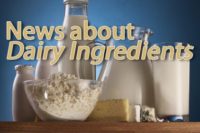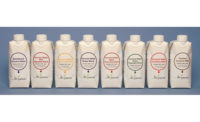Ingredients
Prototypes show the capabilities of coconut ingredients
Coconut water is the fluid drained from the center of the nut, which then goes through processing. Coconut cream is derived from the white part of the coconut that has been pressed and extracted.

Six custom coconut water and coconut milk prototype blends are now available from iTi Tropicals Inc., Lawrenceville, N.J., including organic coconut water 100% juice beverage, two coconut milk beverages, a light culinary coconut milk, an apple-coconut water blend and an orange-coconut water blend.
Don Giampetro, iTi’s vice president of innovation and quality, told Dairy Foods contributing editor Erika Flynn that the new products are in response to the company’s insight that both have great potential for growth.
In an interview, Giampetro said, “We wanted to showcase coconut water as well as coconut cream for use as an ingredient in a variety of prototypes to communicate their functionality,” he said. “We have packaged both in a format to take to our customer base and give them a product to use.”
The difference between coconut water, coconut cream
The difference between the two is that coconut water is literally the fluid drained from the center of the nut, which then goes through processing. The result is a translucent product that is used as “not-from-concentrate” coconut water. Coconut cream is derived from the white part of the coconut that has been pressed and extracted to produce a white flowing substance.
“Coconut water is fat-free,” Giampetro explained, with no protein materials and a small level of carbohydrates. Coconut milk or cream, which has seen an uptick in popularity recently, is very low in carbohydrates but extremely high in fat.
“The idea of coconut fat as a negative fat has gone away,” he noted.
Giampetro said coconut water contains “decent levels” of electrolytes and that most people will use it for its functional properties over taste. While there are those who drink coconut water in its purest form, he sees more potential in using it as an ingredient to get to the right juice content in a product or a certain caloric load.
“That’s the key to the long-term sustainable growth of the product,” he said, adding that it’s a natural fit because it mixes easily with other products and contributes very little color and flavor.
How to use coconut ingredients in dairy foods and beverages
Processors could use coconut ingredients in a dairy/milk facility because coconut water is classified as an allergen and these facilities are equipped to handle such products. They present more of a challenge in high-acid facilities. The coconut milk beverages can be used in such foods as ice cream, yogurt, soup, dressings and sauces. The coconut beverages can be used in products including juice, tea, coffee and soda, among others.
All of the products are packaged in shelf-stable 330-ml Tetra Prisma boxes. These industrial products have been heat-pasteurized as a concentrate and frozen. They would have to be reconstituted and further processed into a finished product.
The company uses its Innovation Center to host customers as well as create prototypes for presentations. “We encourage our customers to leave their day-to-day operations at their lab or facility to come here and be creative for a morning or afternoon,” Giampetro said.
Looking for a reprint of this article?
From high-res PDFs to custom plaques, order your copy today!









